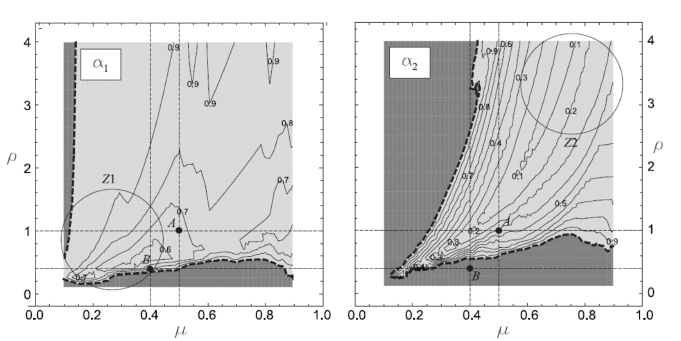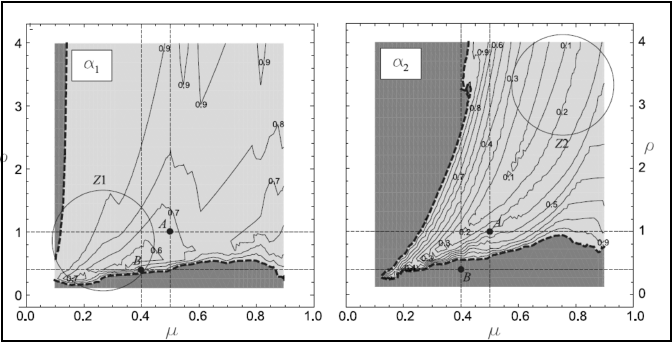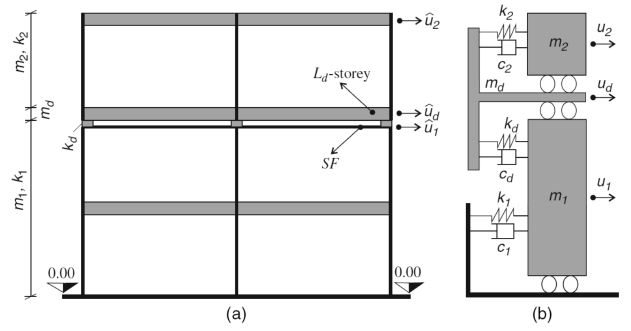UNIVERSITY OF L'AQUILA - ITALY
D.I.C.E.A.A. - Dipartimento di Ingegneria Civile, Edile-Architettura e Ambientale
Structural improve
Structural improvement
Discontinuity
Copyright © A.Di Egidio

Aim of the present study is to investigate the opportunity of improving the dynamic response of a structure by making an intermediate
disconnection through it. In this context it is of interest to wonder if the disconnection works mainly as tuned mass damper for the
lower structure or it works mainly as base isolation for the upper structure. This paper is the first stage of this study. An archetype
model, constituted by a simple two-degree of freedom system, has been taken as representative of structures provided with a disconnection,
where a base isolation or a tuned mass damper scheme is used. The system has a constant total mass, while stiffness and mass ratios
are taken as variable parameters. Two parameters capable of evaluating the efficiency of the disconnection, called the gain indicators,
have been introduced, being the system subjected to an harmonic base excitation. Two different types of behavior maps, one referring
to the base isolation and the other to the tuned mass damper, have been obtained.
Fig. 10.1: Behaviour maps



Taking inspiration from the basic two-degree-of-freedom (2-DOF) models usually adopted to study base isolation (BI) and tuned mass
damper (TMD), a unique main archetype 2-DOF model is here introduced to describe the behavior of general multi-degree-of-freedom (MDOF)
frame systems, in which a stiffness discontinuity (disconnection), such as the one that can be identified in BI or TMD, may be nserted.
With the aim to evaluate the dynamic enhancement following from such a discontinuity for the two masses of the model, two reference
schemes (TMD scheme and BI scheme) are introduced and two particular mean gain parameters are associated with them. These represent
the main subject of the parametric analyses presented in this work, based on variable mass and stiffness ratios. These analyses are
carried out considering groups of earthquake records collected on the basis of a specific criterion (spectrum compatibility). The
results of the parametric analyses are arranged by means of mean gain maps and surfaces that can be directly related to a reference
response spectrum. The mean gain maps provide a description of the dynamic performance of the archetype model. In order to extend
the results obtained for the archetype models to general MDOF frame systems, a specific equivalence procedure is then introduced.
Using such an approach, it is possible to define values of mass and stiffness ratio for a general MDOF systems, and then to use the
maps to design the characteristics of the disconnection. The results expressed by the mean gain maps have been confirmed by several
simulations carried out with reference to a 6-story shear-type frame, thus showing some practical implications of the research.

Fig. 10.2: Archetype model


This paper investigated an intermediate discontinuity in a frame structure and its capability to mitigate the effects of seismic ground
motions. The discontinuity represents a sudden change in the stiffness of the frame. The behavior of a structure after the introduction
of discontinuity was studied by means of an archetype dynamically equivalent three-degree-of-freedom model. Two auxiliary systems
were introduced to evaluate the effectiveness of the discontinuity. The first auxiliary system represented the structure without discontinuity.
The second represented a system in which the part of the structure below the discontinuity is rigid. These two auxiliary systems allowed
us to evaluate whether discontinuity is able to reduce the displacements of frame structure. The results were summarized using three
gain coefficients that portray the ratio of displacements and drifts with and without the discontinuity. When the gain coefficients
are less than unity, the discontinuity improves the dynamic behavior of the frame. To check the effectiveness of the proposed archetype
model, results provided by an archetype and by spatial shear-type frames were compared. Then the archetype three-degrees-of-freedom
system was used to conduct an extensive parametric analysis by varying geometrical and mechanical parameters. The results were organized
in gain maps that represent the contour plot of the gain coefficients. Some maps were built using the spectrum compatibility criterion
so that the results depend only on the seismic design spectrum. The gain maps show several ranges of the parameters’ region in which
discontinuity is effective.

Fig. 10.3. Structural schemes: (a) multi-DOF system; (b) equivalent 3-DOF system (SF = stiffener).






















